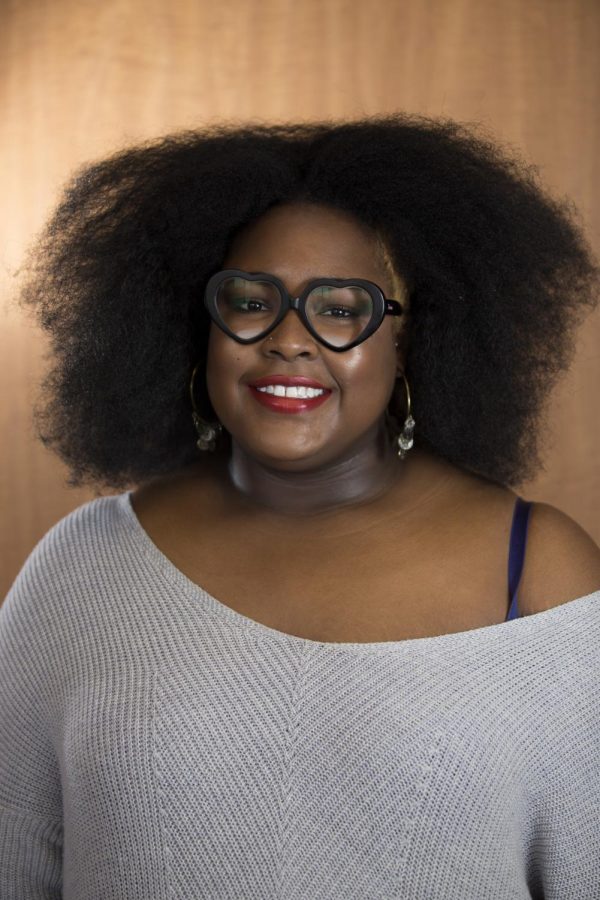Kent State students go “natural” with their hair
March 13, 2016
Taylor Yarborough, a junior fashion merchandising major, wears her hair many ways — along with wearing her hair natural, she has worn wigs, weaves and braids. And often, with each new style, she’s often been asked “Can I touch your hair?” by many.
“I’m not an animal,” Yarborough said. “I don’t really appreciate to be pet like one. I understand that people don’t really know that what they are doing is offensive. So, it’s something that I try not to get mad about.”
For many black women, their hair — and how others see it — is a very important part of them.
“I really think the focus on hair goes back to knowing your history and knowing where you come from,” Yarborough said. “Wearing sew-ins and weaves doesn’t have a big effect on me because I know my history and I can appreciate the importance of my hair.”
Lailah Berry, a freshman journalism major, recently made “the big chop” — she cut off her relaxed ends, leaving only her natural hair — after she realized how much she missed her natural curls.
“When I was younger, I wore my hair natural,” Berry said. “I would get teased for wearing it that way, and I begged and begged my mom to let me get my hair permed.”
Berry said she was surrounded by children at school who all had relaxed hair or braids, which was easier for parents to manage.
“What really pushed me away from wanting to be natural was the amount of time it took to do my hair,” Berry said. “It was a three-hour process.”
Candace Taylor, a junior criminology and justice major, is currently transitioning into her natural curls.
“We are taught growing up that our hair is our crown,” Taylor said. “I really felt like I needed to get in touch with my curls again.”
Taylor attempted to go natural several times, and after realizing all of her friends had done it, she decided to commit.
Diatra Lanham, a junior communication studies major, did not feel comfortable wearing her hair natural until college.
“I feel like I didn’t hear about hair as much until I came to Kent (State),” Lanham said. “I started seeing all these girls with natural hair, embracing their natural style and I thought it was so cute.”
Learning about hair products also pushed Lanham to embrace the natural style of her hair.
“I was in my black images class and we read about autopsy results from black women who used relaxers,” Lanham said, “and you could tell the women apart from which (ones) used relaxers and which one didn’t by the condition of their skull.”
In comparison to Lanham, Yarbrough also promotes the versatility of hair as president of Women of All Textures on campus. The student organization is a “pro healthy hair” group, not just a pro natural hair group for black women, according to Yarborough.
“We try to cater to all women,” Yarborough said. “Whether it’s a woman who has a sew-in, or whether they have natural hair or dreadlocks.”
Yarborough wants members to take pride in their hair, however they wish to wear it, while keeping it healthy through hair texture and product education and styling techniques and workshops.
Although Yarborough has experienced offensive actions because of her hair, the most striking moment she recalled was seeing a magazine that featured ways for white women to get the Afro hairstyles of black women.
“I think that it’s very stereotypical,” Yarborough said. “I’m being told it looks unruly or unkempt when I have my natural hair out, but on the flipside, you’re teaching people how to get hair like mine.”
Lanham can attest to the double standard when it comes to black hair styles.
“People of other races don’t necessarily get the type of criticism that black people get by changing their hair so often,” Lanham said. “That criticism is not even necessarily coming from outside races, but coming from within our own culture.”
For Yarborough, the importance of hair goes deeper than just looks.
“Women should always have the choice of how to wear their hair,” Yarborough said. “I think it becomes a problem when you look back in history, (and see that) black women were wearing their hair straight to fit in.”
Lanham has her own Youtube channel full of videos about hair care techniques and makeup tips for women with darker skin tones, an audience Lanham feels is not widely represented in the beauty world.
“I’ll do lipstick swatches for my viewers,” Lanham said. “Because there have been so many times where I will pick out a shade of lipstick and it looks completely different on me because of my skin color.”
Many installment-like hairstyles including box braids, sew-ins, crochet braids and havana twists can also be used to protect their natural hair, should a person decide to “go natural.” The technique of protective styling offers women’s natural hair a chance to grow out, without being damaged.
“Protective styling is a great way to protect your natural hair from harsh weather conditions,” Lanham said. “There are so many ways to wear a protective style, even wigs are a form of protective styling.”
She said she never felt targeted in a negative way, but always felt different. Some of the pressure on hair styling did come from within the black community for Lanham.
“When you wear your hair straight, people think that you’re trying to embrace this European look,” she said. “That idea has been put into our heads since we were young. My parents didn’t instill that in me, but the community did.”
Lauren Rathmell is a diversity reporter for The Kent Stater. Contact her at [email protected].

























